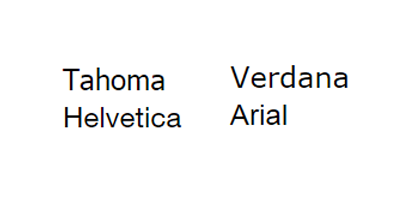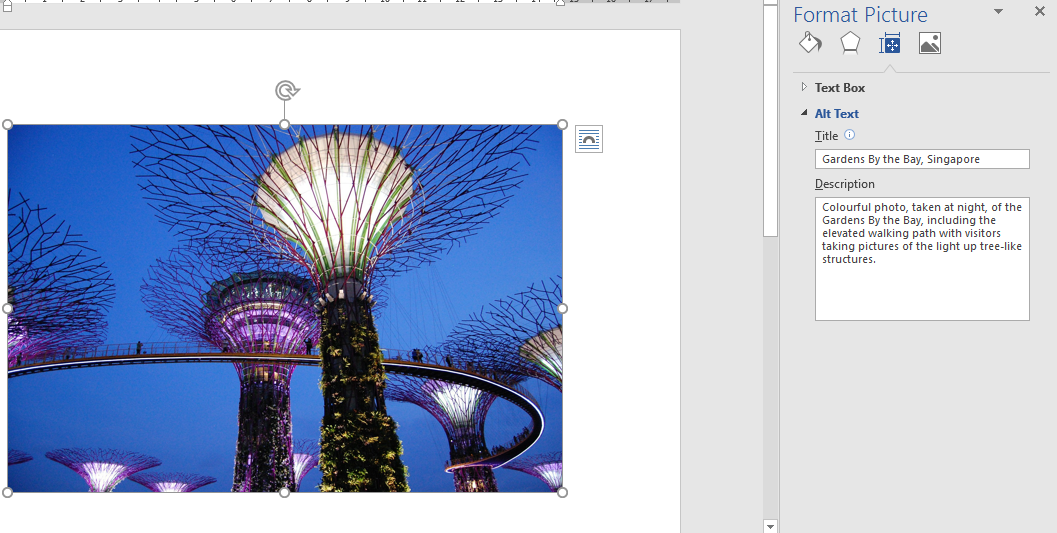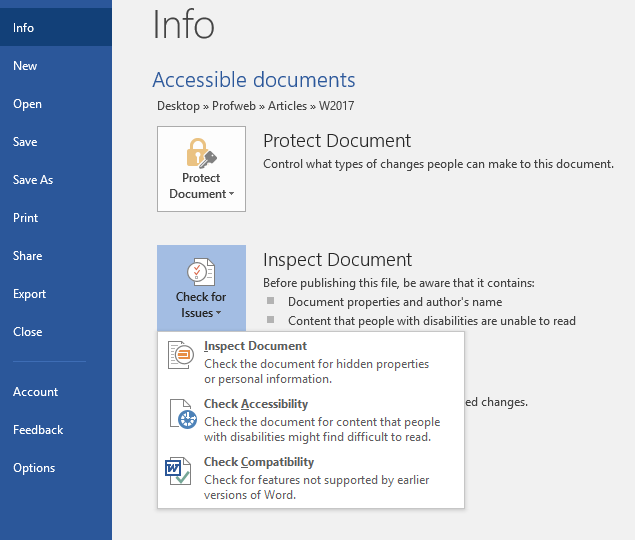Stepping Towards Inclusive Pedagogy with Screen Reader-Friendly Course Material
Inclusive pedagogy is a growing approach throughout the CEGEP network. Many teachers are seeking ways to adapt their teaching strategies to be more inclusive. On February 20, 2017, I attended an APOP webinar entitled: Développer des pratiques pédagogiques inclusives (Developing Inclusive Pedagogical Practices). Among the tools and strategies discussed, one in particular struck me, which was the benefits of using of text-to-speech, or screen readers, for a variety of learning disabilities (dyslexia, concussions, ADHD, etc.). I wondered about what would make documents easily “read” by screen readers and what teachers could do to ensure their course material is accessible. It turns out that it is not complicated to make documents fit the criteria of accessibility.
Screen readers are recommended to students with:
- Problems with attention and concentration
- Orientation to time and space
- Short and long term memory problems
- Visual confusion
- Reduced vision
- Written comprehension difficulties
- Capacity to read without word/letter reversal, confusion or substitution
This includes students with dyslexia, dysorthographia, concussions, neurological difficulties, muscular dystrophy, fibromyalgia, Tourette Syndrome, Narcolepsy, ADD, ADHD, and more.
Another potential user of this technology is someone learning a language. Considering the situation of Quebec CEGEPs, where students study in their second language, whether that be French or English, this could be an interesting tool to integrate into some courses.
What is a Screen Reader?
According to the Canadian National Institute for the Blind (CNIB), “screen readersare software programs that read information on a computer aloud to a person.” This is carried out through text-to-speech output or a braille display. Students registered with Adapted Services may have technology they already use that integrates a screen reader with other aids, such as WordQ. But, there are other options available through common computer tools such as:
- Adobe Reader’s Read Out Loud
- Microsoft’s Microsoft Narrator
- Apple’s VoiceOver and Speak Screen
- Google’s Text-to-Speech
Of course there exist other products as well, such as the commercial software called JAWS (Job Access With Speech) and the free, open source option of NVDA (NonVisual Desktop Access).
Documents that Should Be Accessible
According to Jean Chouinard, Pedagogical Counsellor for the Service national du RÉCIT en adaptation scolaire, and presenter of the APOP webinar, there are 3 types of course documents to make accessible:
- Documents produced by teachers (exercises, calendar of activities, course outline, instructions for assignments, course notes, etc.)
- Textbooks
- Novels and literature
Jean explains that a student with ADD or ADHD is not effective at performing double cognitive tasks. This means that when expected to listen to the teacher giving instruction and take notes at the same time, the student will miss information. Providing accessible documents in advance of class, or alternatively after a lesson has been taught, allows these students to review information at home, where using a screen reader is beneficial to their learning.
Some publishers have accessible and digital versions of textbooks. Others will allow a digital version of their books to be created by educational institutions. At the CEGEP level, we also have the services at the Centre collégial de soutien à l’intégration (CCSI) that help in the creation of audio and digital voice synthesis of a text book. Your local bookstore should be able to help teachers with this.
When choosing novels and literature for courses, finding a digital version is important for several of the conditions listed above. Your local librarian can suggest novels and books that are available in a digital format as well as paper. There is also the Bibliothèque et archives nationales du Québec (BANQ) that offers a digital book lending service. Being able to offer this to your students could make all the difference.
As Jean told me:
What educators should be striving for is to obtain the most optimal learning environment for their students as possible.
By indicating to students that all of your documents can easily be read with a screen reader, and perhaps even showing them how one works, they can take the initiative of working with tools that exist for their benefit and have the potential to improve their learning situation.
Creating Accessible Documents
Jean suggested a few things to think about in the creation of accessible documents. Screen readers are designed to read text, making the use of colours, logos, and photos difficult to convert into speech. There are ways to incorporate most of these elements into a document with a bit of careful planning.
The Institut Nazareth et Louis Braille suggests using these character fonts for accessibility:

Institut Nazareth et Louis Braille suggests using sans serif fonts like Tahoma, Helvetica, Verdana or Arial.
There are other things to consider when creating accessible documents:
- Provide the full title of a hyperlink site, instead of “click here”.
- Underline a word in addition to highlighting with colour or bold
- Use formatting styles for headings suggested by Word
- Use bullets for lists
- Use table headers in the table design tools
- Justify text left
When inserting photographs, logos, shapes or SmartArt there is an option available to provide a text description for the image. When using Microsoft Word you simply need to:
- Right click on the image
- Select Format Picture then Layout & Properties
- Select Alt Text & insert a title and description.

Photos, logos, shapes, etc. are made readable by screen readers when Alt Text is added. The title and description will be read by the screen reader.
Word also has an accessibility checker that can be used to scan your document. It is easy to find by selecting:
- File
- Info
- Inspect Document – click on “Check for Issues”
- Check Accessibility

The Check Accessibility option in Microsoft Word.
Some helpful features available in Windows software you are already familiar with. These include the Zoom option to make text larger, and the Read Mode. This mode is often seen when opening an attachment in the Read Only view.

The Read Mode to make reading documents easier is found in the bottom right corner, near the Zoom option.
Microsoft’s support website has helpful information on accessibility tools available for their software. The options and tools are very similar from one product to the other, making it easy to learn how to integrate these principles into the creation of documents.
- Make your Word documents accessible
- Make your PowerPoints presentations accessible
- Make your Excel spreadsheets accessible
- Make your Outlook email accessible
By incorporating these elements into the development of teaching material, teachers can put inclusive pedagogical strategies to work. Creating a few habits in course preparation will make an important difference for students who use screen readers. Ensuring documents are posted online and available in a timely fashion will also help the learning experience for students, encouraging them to become more autonomous.

